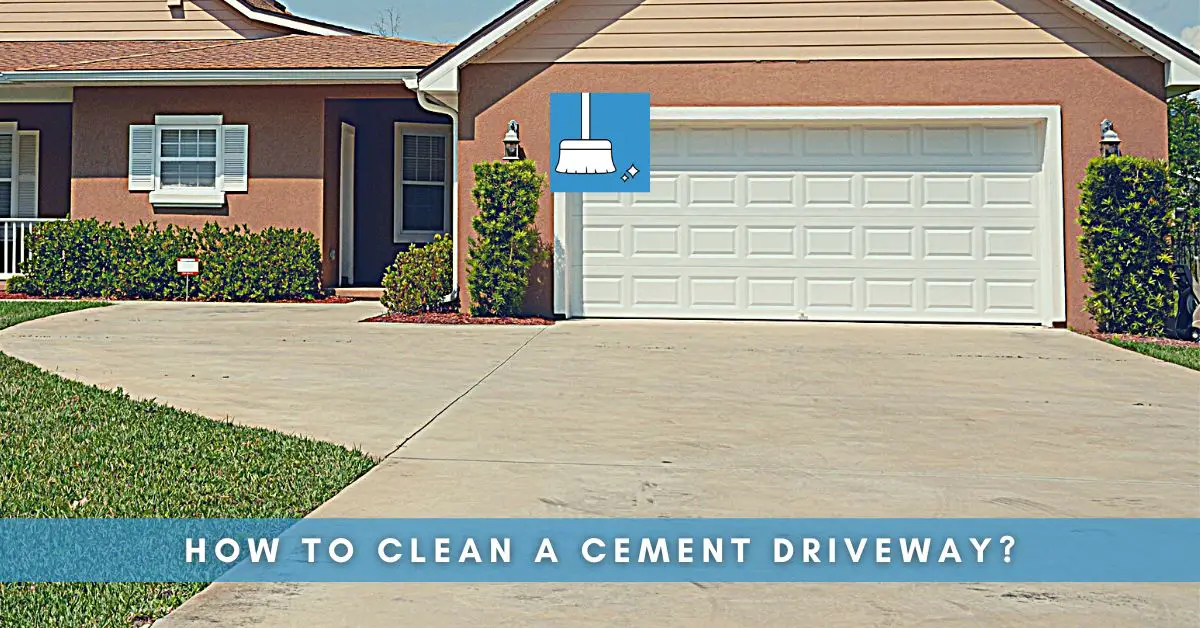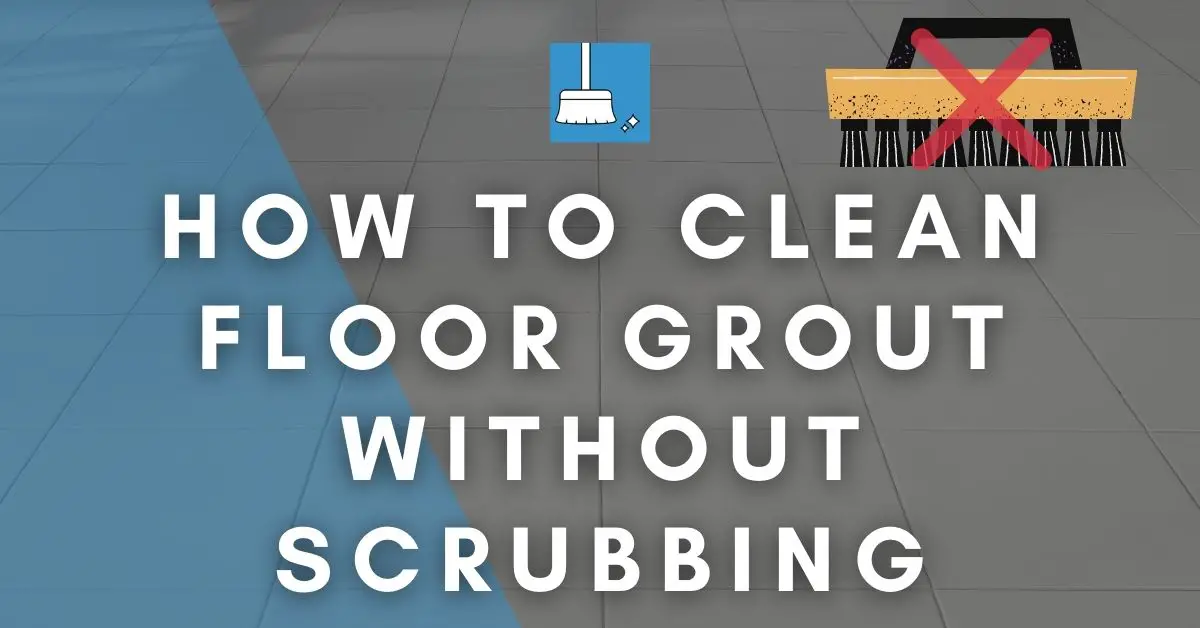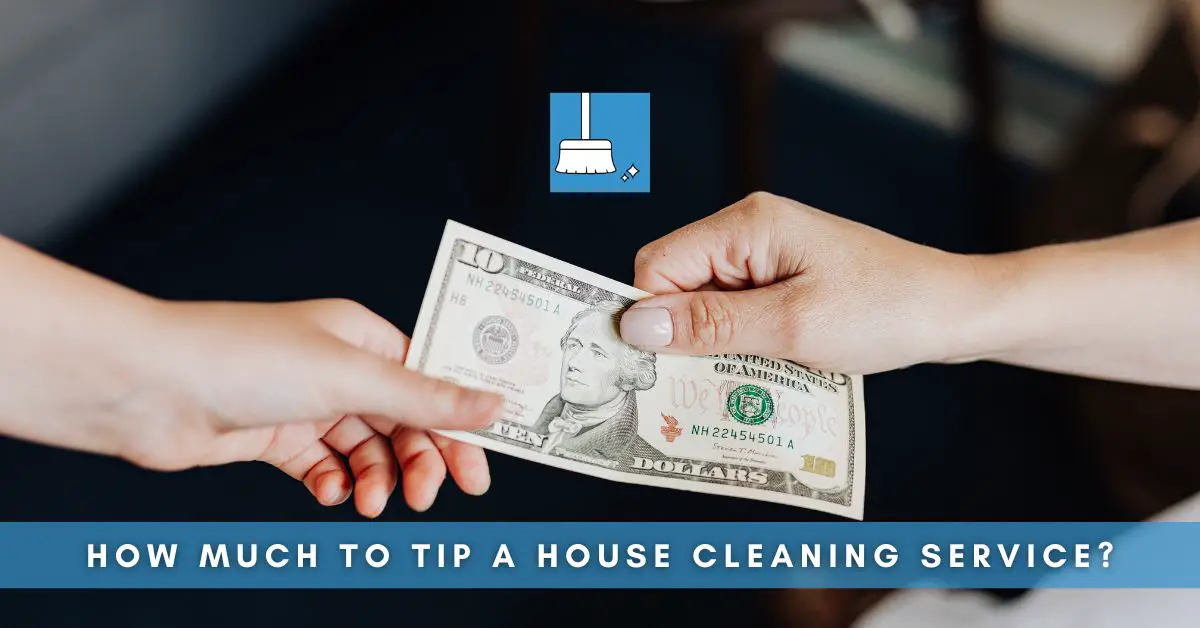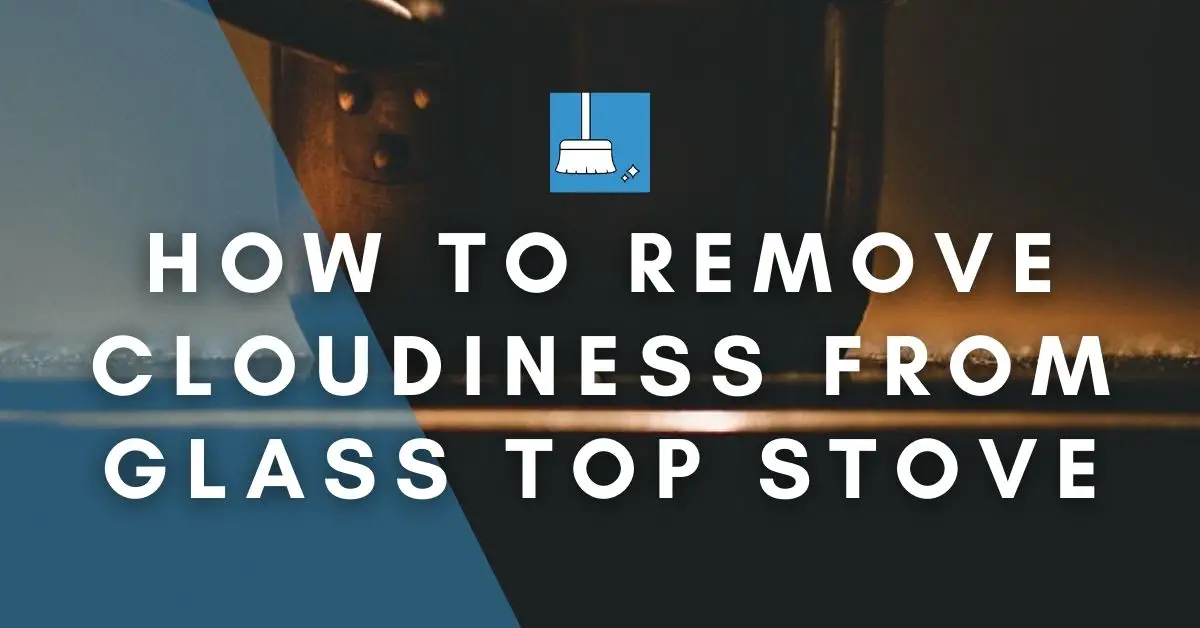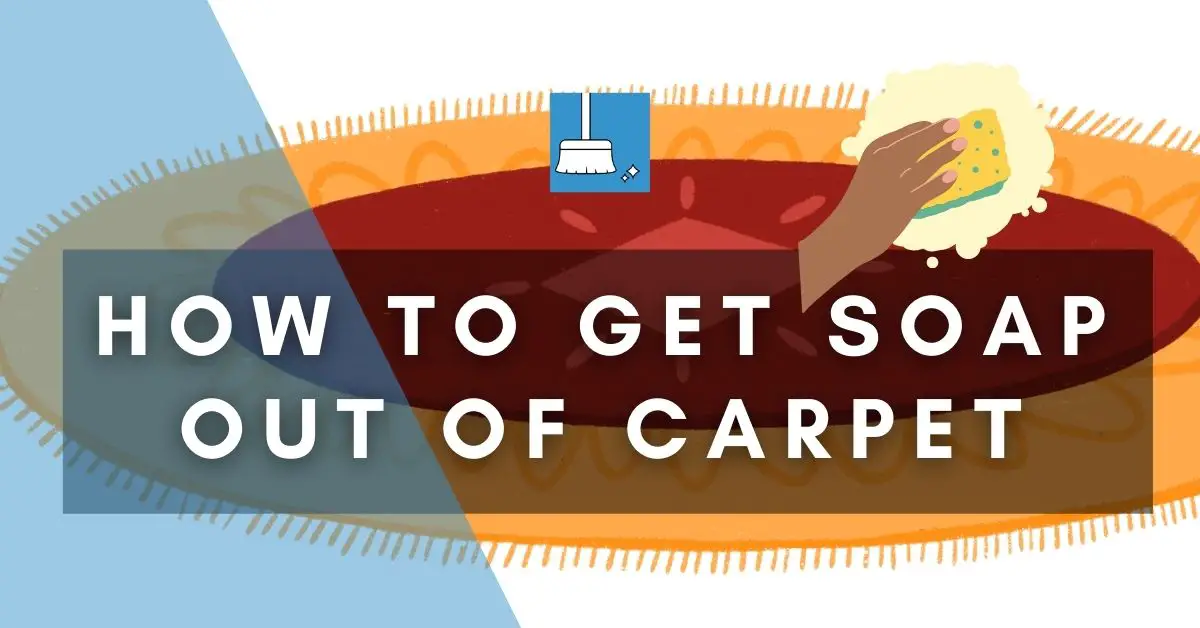Cement driveways bear the stains of all kinds of motor oil, spray paints, tire marks, paint spills, mold, and mildew. An ugly driveway totally ruins the overall appearance of the façade. Not everyone has a pressure washer to clean their driveways, so in this article, we’ll see the methods that can be used to clean Cement driveways, even if you don’t have access to a pressure washer.
How to Clean a Cement Driveway? (Without a Pressure Washer)
Step 1: Remove Surface Dust & Debris
First, remove or treat the weeds in the cracks & joints on the surface. Then, use a long-handle broom to sweep away the dust and dead leaves, pine needles, rocks, etc. from the cement driveway.
Step 2: Remove the Different Stains
# Cleaning Oil & Grease from a Cement Driveway
Because cement is porous in nature, any oil that comes in contact with it starts to seep into it. If the quantity of oil or time for which the oil sits on the cement surface is too much, there are chances that would have seeped in pretty deep.
Whether a car sitting on a cement driveway and leaking oil for months or a fresh careless spill from your side, the situation is controllable and that seeped-in oil can be taken out from the cement.
Few people recommend using coca cola to get grease stains out of cement or concrete surfaces. Although coca-cola has phosphoric acid in it which can open up the pores of the concrete, it will etch the cement surface and after a while, you will notice a change (acid stain) in that specific area when you had poured it.
So we’ll use another method. This is the old-school way of using a lot of elbow grease to get the oil stain out of the cement driveway.
Before you begin, if the spill is a fresh one and the oil is lurking on the surface of the driveway, take this one additional prior step. Use cat litter, sawdust, or cornmeal to sprinkle over the area and stay for a day. Sweep it away the next day.
These next steps are common to all types of oil and grease stains (whether fresh or old).
STEP 1- Mix mineral spirits and diatomaceous earth in such a way that the resultant mixture is a thick paste of paint-like consistency.
STEP 2- Apply this mask over the oil stain on the cement surface and let it stay overnight or for about 24 hours. This poultice will suck up oil from deep within the cement surface to the surface.
STEP 3- Scrape off the poultice from the surface, sweep the rest of it away from the surface onto a dustpan, and dispose of it.
STEP 4- Pour laundry detergent directly over the oil stain and scrub (Using a broad scrub brush) for about 5 minutes before letting it sit for 30 minutes.
STEP 5- After 30 minutes, again pour more detergent on the cement driveway floor and scrub hard again.
STEP 6- Now rinse the cement surface using a hose. If the area is small, you may directly pour water from a bucket over the scrubbed area.
STEP 7- With a wet floor, you cannot tell if the grease is still in it. We’ll have to let the surface dry to see if the grease stain is out.
STEP 8- Repeat the poultice application, pouring of laundry detergent, scrubbing, rinsing, and drying as many times as needed.
Alternatively, you may simply pour a degreaser of your choice (such as Rustoleum) and scrub the surface using a hard bristled brush. Repeat the process a few times so that the stains come off fully. This method will need you to scrub less and will also save some of your time but the degreaser is something not readily available in everyone’s home and it will cost you a few bucks as well.
# Clean Mold & Mildew from a Cement Driveway
Mold grows in damp, cold, and humid environments, so if your driveway is in such an area, chances are pretty darn great that mold will often grace your driveway.
STEP 1- Wear a mask or respirator, safety glasses, gloves, and shoes because we’ll be working with bleach which you don’t want to breathe in a lot or get into your eyes or nose as that can irritate the lungs.
STEP 2- In a pump sprayer, take water and mix equal amounts of chlorine bleach in it. If you’re using laundry bleach, use more of it than water (about 60 % bleach and 40% water).
STEP 3- Spray the bleach solution all over the cement surface with mold, starting from the highest end of the driveway slope, and start to scrub the surface using a hard bristle (non-metallic) brush. Bleach will start to kill mold and mildew in some time and you’ll notice the color start changing.
Note: Bleach does remove mold from the surface of porous surfaces but since the mold has its roots deep into the ground, even bleach will not be able to kill the spores.
STEP 4- There is no need to rinse the area as we want the bleach to get as close to (and hopefully kill) the mold spores, so let the solution sit and dry on its own. If there is dirt and mildew that needs to be cleaned off the surface, perform a normal cleaning of the driveway after you’re done killing the mold using this method.
You can alternatively just mix the solution in a bucket and pour the solution over the surface directly but slowly.
# Removing Tire Marks from a Cement Driveway
Removing tire marks off your cement driveway depends upon how long have they been on the surface and how thick they are.
The best way to get rid of Tire marks on a cement surface is to pressure wash it.
Blast off a pressure washer (At about 2000-2500 psi) after applying a solvent on the driveway. This will loosen the plasticizer pieces and the solvent. Make sure to maintain a safe 12-15 inches distance between the nozzle and the cement surface (and a 45-degree angle).
You’ll see the blackish gunk coming right off the cement surface.
You’ll have to be extra careful while using a pressure washer as you don’t want to damage a weak cement surface (especially if it is already cracked). Also, keep moving the pressure washer from side to side while washing the surface so that you don’t hold it on a single spot for more than a few seconds.
If you don’t have a pressure washer or if the driveway is cracked, you should use only a degreaser to take off the marks.
STEP 1- Simply pour the concrete degreaser of your choice directly over the tire marks and let it sit for about 5 minutes before you start to scrub with a hard bristled (non-metallic) brush.
STEP 2- Keep scrubbing until you see the black marks dissolving and leaving the place of their residence.
STEP 3- Finally, rinse the cement driveway using a hose.
# Removing Paint from Cement Driveway
Paint spills can happen on driveways during a renovation project being carried out. More than paint spills, cement driveways will bear spray paint wounds on them, the culprits behind which are those local nasty children.
If It is SPRAY PAINT that you’re trying to remove from that cement surface:
Simply pour undiluted acetone on the surface and scrub hard using a non-metallic hard bristled brush. Rinse the surface and scrub again to take off any remaining paint. Finally, rinse the driveway clean using a hose.
For OTHER DRIED PAINT SPILLS, we will be using white vinegar as it is totally safe on cement floors. Alternatively, you can also use a paint stripper available in the local hardware stores or online.
STEP 1- Pour the vinegar /paint stripper directly over the paint spill (if the area is small) but if the stains are extensive then first pour vinegar in a spray bottle and then spray it on the stains.
STEP 2- Let the vinegar sit on the stains for about 4-5 minutes for the acid in to act on the paint.
STEP 3- Using a wet scouring pad (such as scotch brite), scrub the paint stains. You will notice the stains easily coming off the cement surface.
STEP 4- If need be, pour more vinegar while you are scrubbing, otherwise use an old cloth to wipe away the dislodged stains.
Step 3: Wash the Driveway
This is the final step after you’ve first swept the surface and taken care of the stains. Simply use a garden hose and rinse the whole driveway starting from the high end of the slope.
Keep a long handle brush with you in case you encounter any dislodged stains that are still not leaving the place, to force them out of the way.
How to Clean a Cement Driveway? (Using a Pressure Washer)
If you are planning a spring cleaning of the entire house, then don’t clean your cement driveways before cleaning the roof and sidings of your house otherwise that dirt will again come and settle on your clean driveway.
STEP 1- Cover the plants using a tarp as the chemicals used in washing will harm them.
STEP 2- First, remove the spot stains using the methods above, and then come back to washing the entire surface using your pressure washer.
STEP 3- Wear safety glasses and earbuds for your protection from high-pressure water and the loud noise of the machine.
STEP 4- You can use a concrete cleaner or household detergent in your pressure washer or simply the water.
STEP 5- You should not set the pressure too high for your cement surface as that can etch the surface. To apply the soap, just use 40-degree nozzle or the soap fan nozzle.
STEP 6- Turn on the pressure washer facing toward the cement surface to apply the soap to the surface. Start from the high end of the slope and move in sections (left to right and then right to left, forming a zig-zag).
STEP 7- Don’t let the soap sit for too long on the surface, so quickly get to rinsing the surface using your regular spray from the pressure washer. The crevices and joints in the cement driveway can hold detergent in them, so you’ll need to run extra water in them.
Conclusion!
Paint, tire marks, surface dust, mold, and mildew on Cement driveways can be cleaned using simple household items like bleach, vinegar, acetone, etc. But deeply set-in oil stains have to be dealt with using a poultice, laundry detergent, and a lot of elbow grease.

